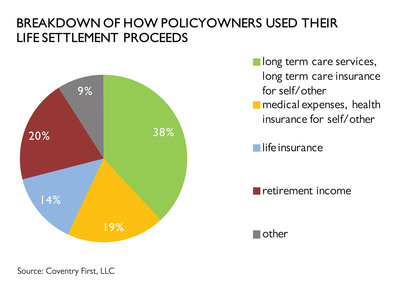Life Settlements: The Basics
 When you bought your life insurance policy, you had certain expectations for it. You opted for a particular benefit amount and premium in order to provide for the people you love and cover any final expenses.
When you bought your life insurance policy, you had certain expectations for it. You opted for a particular benefit amount and premium in order to provide for the people you love and cover any final expenses.
However, what if your circumstances changed and you no longer needed the policy? Or perhaps you couldn’t wait for the payout any longer? In cases such as these, people used to have few options – and none of them good.
If for some reason you no longer needed or could afford a life insurance policy, your only choices were to let it lapse or to hand it back to the insurer for whatever small amount they chose to offer you for it. With life settlements, you are no longer placed between the proverbial rock and hard place.
What is a Life Settlement?

Once the policy changes hands, the company that bought it will pay the premiums until the original owner’s death, at which point they will receive the full benefit.
How Did Life Settlements Emerge?
Life settlements really started out as a thing called “viatical settlements.” Specifically, the market for these payouts emerged during the AIDS epidemic, when patients diagnosed with the disease were confronted with massive bills for medicines and care.
Those who had life insurance policies but couldn’t use them were faced with a dilemma: what was the point in paying high premiums for something that they couldn’t get any value out of now, when they had such other pressing concerns?
In response to this common problem, funding groups offered to buy out the policies for competitive rates, allowing patients to get money immediately for the care that they needed. Since that time, viatical settlements have changed, and are now used for cancer, heart disease, and a number of other fatal or chronic conditions.
Outlook for the life and structured settlements markets in 2016
These settlements have also expanded to allow elderly people in good health to get a decent amount of money for their policies; these are referred to as “life settlements.”
Why Should I Get a Life Settlement?
If you are wondering whether this option is for you, consider your life, family, and goals. Ask yourself the following questions:
- How much money do you need and is there another reasonable way to get it?
- Will the amount you get be enough to cover your expenses?
- Are your beneficiaries independent now, or will they need the money in the future?
- Do you have medical expenses that are impossible to pay for?
- Are you still able to afford the premiums for the policy?
- Have your circumstances changed so much that the policy is no longer appropriate for your needs?
- Are you having trouble affording your basic life expenses, like car payments and grocery bills?
- Do you need to pay off any other debts, such as credit card bills and things that accrue interest?
- Were you hoping to pay off your child’s student loans?
- Do you have any life goals to fulfill, such as trips or experiences, which you can’t afford now?
If your answers to the above questions are pointing you towards a life settlement, consult with your family and a financial planner to see if it would be a smart move for you.
Data Suggests Life Settlements Present an Underutilized Resource for Advisors
Category: Life Insurance






